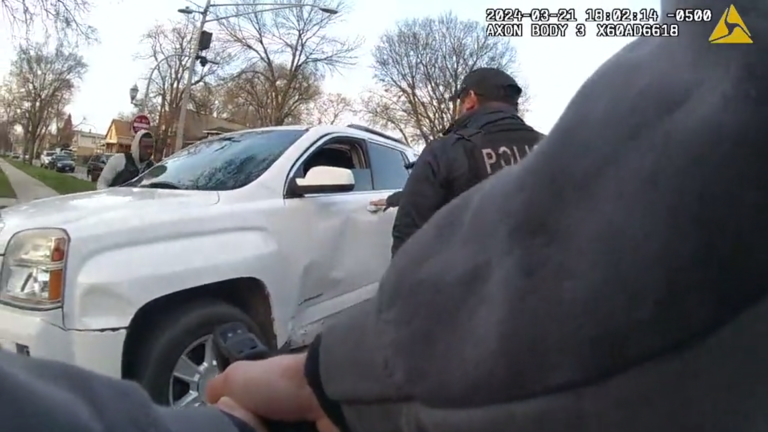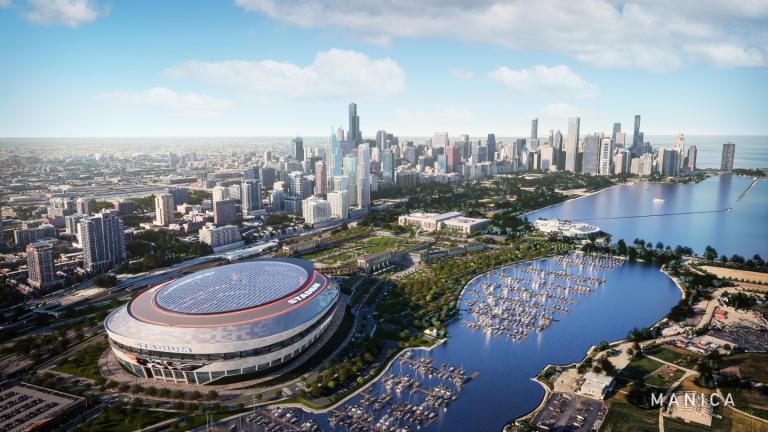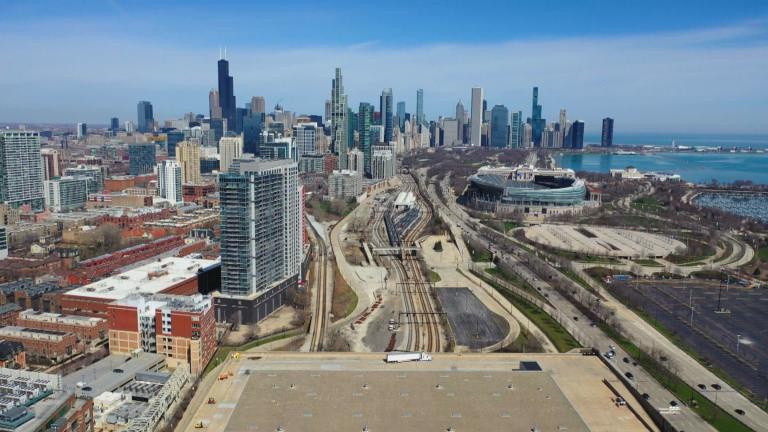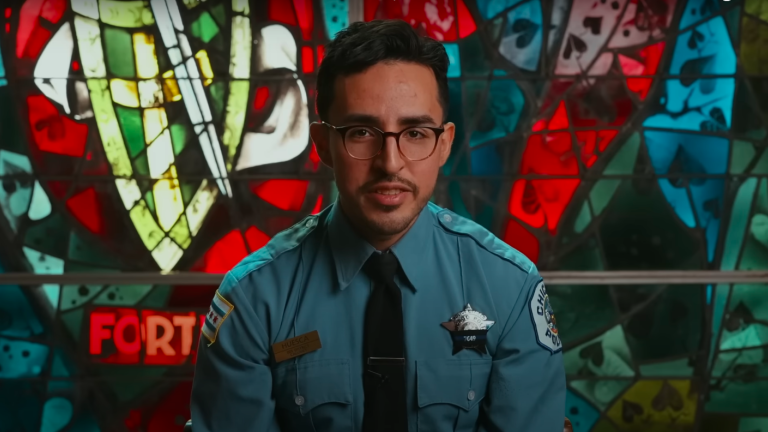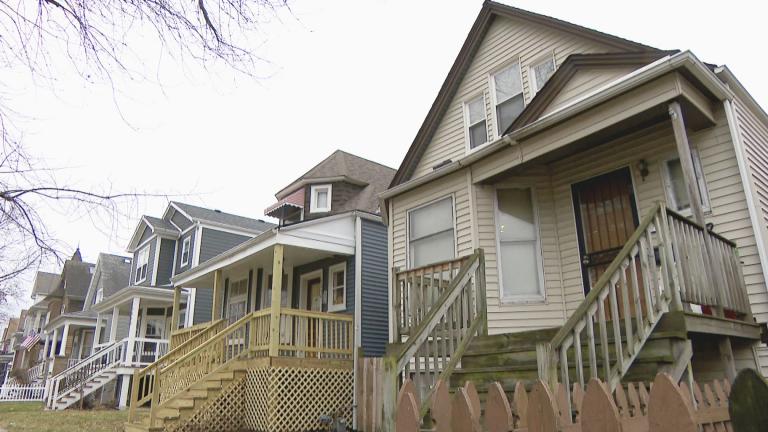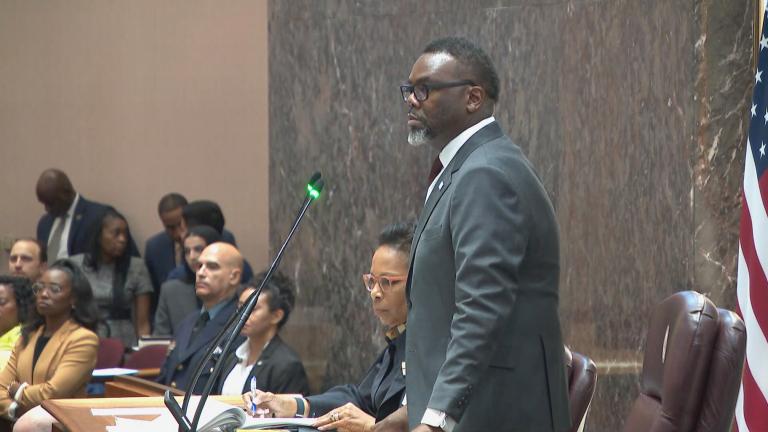 Olga Bautista, the executive director of the Southeast Environmental Task Force, lauded Mayor Brandon Johnson's proposal. (Heather Cherone/WTTW News)
Olga Bautista, the executive director of the Southeast Environmental Task Force, lauded Mayor Brandon Johnson's proposal. (Heather Cherone/WTTW News)
Armed with what officials called a comprehensive accounting of the burden air, water and soil pollution imposes on South and West side neighborhoods, Mayor Brandon Johnson said Monday he would ask the Chicago City Council to pass new laws to protect those communities.
Flanked by environmental justice advocates who have protested City Hall for decades, Johnson said he would no longer allow the residents of Austin, East Garfield Park, Englewood, Humboldt Park, Lower West Side, McKinley Park, New City, North Lawndale, Roseland, South Deering, South Lawndale, West Englewood and West Garfield Park to live in neighborhoods where the air was not safe to breathe.
“In the greatest city in the world, no neighborhood should have to suffer the burden of pollution more so than any other neighborhood,” Johnson said. “The time to act on environmental justice is now.
Read the full cumulative impact assessment here.
Johnson’s promise on Monday comes after he vowed during the campaign to champion what he called the Cumulative Impact Assessment Ordinance, which would allow the City Council to take into account the amount of existing air, water and soil pollution in a community – not just what the proposed project is expected to add if it is approved – when considering allowing additional polluting industries.
Johnson campaigned on a platform that promised to put an end to what he called “literal sacrifice zones” – neighborhoods home to Black and Latino Chicagoans where industrial firms are allowed to pollute the air, water and soil with impunity, making residents sick and degrading their quality of life.
The assessment, which took 15 months to complete, was required under the terms of an agreement reached by former Mayor Lori Lightfoot with the U.S. Department of Housing and Urban Development that required the city to stop allowing industrial businesses to continue to pollute the already dirty air, water and soil on Chicago’s South and West sides.
That agreement resolved allegations levied against the city by federal officials who concluded Lightfoot’s administration violated the civil rights of Black and Latino Chicagoans by allowing a metal shredding and recycling operation to move from the North Side to the Southeast Side that “continued a broader policy of shifting polluting activities from White neighborhoods to Black and Hispanic neighborhoods, despite the latter already experiencing a disproportionate burden of environmental harms.”
That agreement not only required the city to document the disproportionate burden of pollution of the South and the West sides but to identify what officials will do to protect residents of neighborhoods suffering from “burdens associated with intensive industrial and transportation uses.”
The proposed ordinance would require city workers to respond more quickly to pollution complaints, reduce emissions from diesel trucks and ramp up efforts to take the concerns of those who live on the South and the West sides seriously.
Lightfoot rejected Reserve Management Group’s application for the final permit the company, which also owns General Iron, needs to operate the already completed facility in February 2022, saying it posed an “unacceptable risk” to the health of residents.
Johnson has vowed to fight a decision by an administrative law judge that could force city health officials to issue the permit, ensuring Johnson will be the third Chicago mayor to grapple with the fate of the shredding operator.
While Reserve Management Group officials have repeatedly said Southside Recycling would be the most “environmentally conscious metal recycling facility in the country,” activists have vowed to continue the fight.
Three of those activists stood alongside Johnson on Monday, and praised him for hearing their cries for environmental justice.
Kim Wasserman, the executive director of the Little Village Environmental Justice Organization, fought back tears as she hailed Johnson for charting a new course.
“It is crazy to be standing right here,” said Wasserman, who condemned Lightfoot for allowing a plume of dust to coat six blocks of homes in Little Village after crews botched the demolition of the smokestack at the former Crawford coal power plant, just as the coronavirus pandemic was beginning to slam Chicago.
“This is a moment of triumph,” said Cheryl Johnson, the executive director of People for Community Recovery and the daughter of Hazel Johnson, known as the mother of the environmental justice movement for her work in Altgeld Gardens.
But more work remains, said Olga Bautista, the executive director of the Southeast Environmental Task Force.
Johnson's proposal “is not going to solve everything, but it does put forward the issues,” she said.
Contact Heather Cherone: @HeatherCherone | (773) 569-1863 | [email protected]

